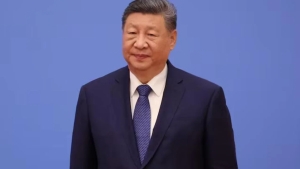
In the past year, peaceful but significant processes have been observed in China. This was reported by Zamin.uz.
Officials who were representatives of national minorities holding high political positions in autonomous regions have been dismissed or investigated. These events occurred in the Tibet, Mongol, and Chuan regions, indicating changes in the party and state's approach to managing ethnic representation.
Although official statements explain these cases within the framework of anti-corruption efforts, they carry political significance. These events represent a process of redefining the Chinese Communist Party's stance on loyalty, governance, and the concept of national autonomy.
In January 2025, the chairman of the Tibet Autonomous Region, ethnic Tibetan Tsi Chjala, was subjected to disciplinary investigation. He was expelled from the party and accused of bribery and undermining party values.
Lan Tyanli, an ethnic Chuan representative and regional chairman in Guansi, faced a similar fate. In Mongolia, the autonomous region's chairman, ethnic Mongol Van Lixya, was also subjected to disciplinary measures.
All of them held the highest positions among national minorities within China's political system. Their rapid removal from office holds systemic and symbolic importance.
At first glance, these purges appear to be a continuation of Xi Jinping's anti-corruption campaign. However, their simultaneous timing and ethnic context require deeper explanation.
These investigations are not ordinary; they target national minority leaders. Previously, these individuals represented the party's ethnic inclusivity policy, but now this balance has shifted.
During the reform period, the party's policy aimed to maintain nominal autonomy while ensuring political centralization. In practice, this meant promoting cadres who were culturally national and politically reliable.
The recent purges indicate that this balance has shifted in favor of central control. This process is not new.
Since 2020, Beijing has become increasingly concerned about any ethnic separations. The introduction of Mandarin as the main language in core subjects in Mongolia, increased control over religious institutions in Tibet, and personnel changes in Xinjiang province are part of a comprehensive ideological project.
This project aims to subordinate ethnicity to a single nationality defined by the party. Therefore, the purging of leaders is not only a disciplinary measure but also a warning.
This even means rejecting symbolic differences or weak ideological harmony. From a governance perspective, these purges prioritize loyalty to the party over local roots.
The personnel system has always valued loyalty, but now local legitimacy, especially ethnic and regional roots, is seen as a risk. The message is clear: national minority leaders must be accountable not to their peoples but to the party.
This approach has strategic importance. The central government has long been concerned about the political independence of ethnic regions.
In conditions of economic decline and regional imbalance, Beijing reduces local governance autonomy to minimize the risk of decentralization. This is a preventive policy but reveals the limits of China's "regional autonomy under unified leadership" model.
In practice, autonomy remains nominal only, with no real ability to make independent political or personnel decisions. Internally, the increased centralization of ethnic governance may disrupt the delicate balance maintained since the 1980s.
If meaningful autonomy disappears, regional governments may become administrative appendages of Beijing. Such a policy threatens local culture and languages







